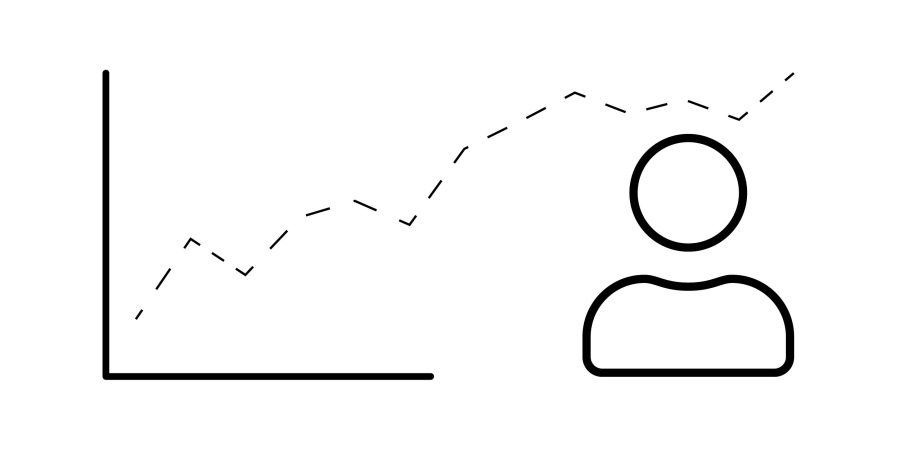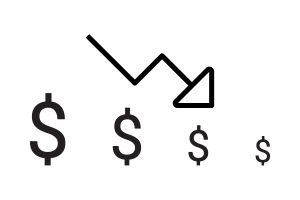Introduction
It’s important to understand and keep in mind that general contractors are a business, and while they build buildings, their primary purpose is to make money. This page investigates general information about what to expect for costs and business related expenses. It is common on larger projects for the general contractor to submit billing requests to the Owner, which are required to be approved by the Architect. The Architect must verify that the statement of % completion of work is generally correct.
While this page goes into definitions with regards to a Contracting business, many of the pieces can be translated to Architecture firms without issue. Keep in mind that as times and technology change, so does the amount certain companies bill, or to put another way– are able to bill. These are not rules and rather a good starting spot for assumptions and definitions for how they relate to one another.
Overhead
Overhead costs usually include all the general costs of operating and maintaining a contracting business plus all project expenses that are not included in material, labor (payroll and payroll taxes), or equipment costs.
- Overhead costs vary greatly with the size of the contractor’s operation.
- A contractor working from home with no advertising would have much lower overhead than a large corporation which advertises and has building space.
Total Overhead
General Overhead + Project Overhead. Actual amounts depend on the locality of the project and type.
- Equals about 10-20% of the total cost of labor, materials, and equipment.
- 5-20% of the total construction cost
- 10-40% of labor costs
General Overhead
Cost to run a contracting business and involves office rent, secretaries, heat, etc. These are all the costs that cannot be charged to a specific project, such as rent.
- Costs as rent are continuous while others vary over time and size of the firm.
- 8-15% of the total value of business for a large firm
- Advertising, Furniture, Utilities, Salaries, Rent, etc.
Project Overhead
Money it takes to complete a particular job, not including labor, materials or equipment. This is temporary offices (site offices), telephones, facilities, trash removal, insurance, permits. All these costs would be directly associated with a specific project but cannot be attributed to labor, materials, or equipment.
- 4-10% or more the cost of construction
- 10-20% of labor costs alone
- Bonds, Insurance, Equipment Storage, Permits, Project telephone/office/trailer, Transportation, etc
Profit
The amount of a contractor’s profit is normally expressed as a percentage of the total estimated costs of materials, labor, equipment, and overhead. This percentage varies based on the type of project, size, and amount of the contract.
- Unknowns include such risk factors as local labor conditions, weather, and the owner’s financial solvency
- Signature Architecture | Starchitect: Architects who are known for their work and their designs. They can command better projects and get premiums on their design fees.
Profit Amounts
- 5-40% heavily based on economic conditions and market at the time, project type, etc.
- 20-25% for small projects with many unknowns
- 15-20% percent for medium sized projects
- 10-15% for larger projects
- 5-10% for very large projects
Construction Material Costs
Construction costs are heavily dependent on the market, world situation, and various economic factors. Buying locally can help reduce the cost impacts of energy prices on materials, but to a certain extent, there is little control possible.
- Project Development Budget: Professional services + Site development + Contingency + Construction Costs + Other fees such as legal and insurance.
Cost Indexes
One of the most difficult things is to find accurate and reliable cost information for various prices of construction units being used. There are many books/companies/services that publish these.
When choosing which to follow, the considerations given should be:
- Desired accuracy
- Material and wage components and respective weightings that make up the index
- Geographical area covered by the index
Regional Index Cost
Costs vary greatly by region. To account for this, the indexes are calculated by averaging costs in a number of major US Cities. Index costing uses a base of 1000 (or another value) and each cities index is given for the cost of material related to that city. This allows quick and easy comparisons for labor and material changes in prices based on different cities.
- If New York has an index base of 1000, Boston might have an index of 1100. You would need to add 10% to convert from New York prices to Boston prices for this particular index.
Feasibility Study: Should be prepared at the beginning to determine whether or not a project is feasible. Upon initial study, the feasibility study needs to line up generally with the expectations of the market and client goals.
- For approximate estimates in the early stages of development, a general purpose cost index is easiest and most economical.
Construction Cost Escalation
Hypothetical index is set for a base year. Index indicates a baseline year and then adjustments for the cost of a material for different years, to account for fluctuations in price.
- If 2020 has a baseline of 100. 2021’s baseline changes to 105 for that same material. This indicates the material is 5% more expensive in 2021 than it was in 2020. Take the material and multiple by 1.05 to get the new value, or to convert back you take 1.00/1.05 = .9524 and use this to multiply.
Taxes
Federal tax laws play a very large role for incentivizing the building construction industry. Favorable tax code has the potential to increase and spike new construction projects in certain jurisdictions.
Ad Valorem Tax: (Latin for “according to value”) is a tax whose amount is based on the value of a transaction or of property.
Raising Money & Debt
Revenue Bonds: Used to finance revenue-producing projects (toll bridges, water treatment plants, etc) The fees collected by such facilities are used to pay back the bonds.
- Other examples: Airport, hospital, or stadium
General Obligation Bonds: Used to finance the construction of facilities (a specific project) that do not collect revenue (schools, roads, parks, etc) The principal and interest on such bonds are paid from tax revenues.
- These must be approved by voters in the jurisdiction
- These projects have the bidding environment transparent
Debt Ceiling: The total amount of debt a municipality is allowed to get into and take on
Financing of Building Projects
Tax Increment Financing: Method cities use to issue bonds to pay for improvements (sewers, streets, etc) within a specific district that is meant to spur development within that district
Pro Forma: Analysis of the financial feasibility of a potential project
- Establishes projected potential income and cost of developing the project including things like the cost of money (financing interest and other costs)
- Also is a way to determine a project’s construction budget by listing anticipated labor and construction costs
Debt Service | Cost Of Money: Cost to pay off a construction loan for a project. It is considered to be an ongoing cost over many years; it is not part of the original project cost. This is how much the money costs to borrow (interest rates and fees)
Cash Flow: The amount of change in cash (positive or negative) over time
General Services Administration (GSA)
The GSA was formed by President Truman to help primarily oversee the building, management, etc of government office buildings. It has since evolved and has the authority to build and acquire all sorts of different projects. It is one of the largest building authorities in the world.






Leave a Reply
You must be logged in to post a comment.